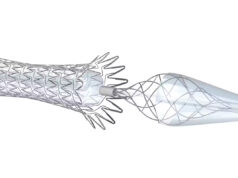Contemporary data on outcomes in open thoracoabdominal aortic aneurysm (TAAA) repair is limited to reports from major aortic reference centers showing excellent outcomes, rather than broad-based, real-world observations. In order to deal with this deficiency, Virendra I. Patel, MD, and his colleagues at the Columbia University Medical Center, New York, performed a study to characterize the national experience of open TAAA repair using national outcomes data.
In Wednesday’s Vascular and Endovascular Surgery Society (VESS) session, Dr. Patel will discuss their results, with a primary focus on the influence of operative volume on mortality and morbidity.
He and his colleagues queried the Nationwide Inpatient Sample data from 1998 to 2011, including all patients with a diagnosis of TAAA who underwent open operative repair. Patients with a concomitant procedure code for cardioplegia, coronary bypass, heart valve surgery, and endovascular aortic repair were excluded, leaving 14,263 patients included in this analysis.
These patients were further stratified into tertiles based on the operative volume of the institution that performed their operation: low volume (LV, less than 3 cases/year), medium volume (MV, 3-11 cases/year), high volume (HV, greater than 11 cases/year), according to Dr. Patel.
Baseline demographics as well as perioperative outcomes were compared between the three groups and multivariable logistic regression was performed to determine predictors of operative mortality and morbidity. They also performed subgroup analyses of patients presenting for elective surgery and those presenting for urgent/emergent surgery.
The overall operative mortality was 21% for the entire cohort, with operative mortality being significantly higher at LV (26%) and MV (21%) centers compared to HV centers (15%, P less than .05). This difference was similar in both the elective (18% and 14% vs. 12%, respectively) as well as the urgent/emergent (34% and 30% vs. 19%) surgery groups.
They also found that rates of blood transfusion as well as acute renal failure were significantly lower in the HV group. Multivariable analysis revealed that when compared to the HV group, patients operated on at LV (OR 1.9, P less than .05) and MV (OR 1.5, P less than .05) had at least 1.5 times the odds of in-hospital mortality.
The HV group also showed significantly lower odds of dying in the subgroup analyses of both the elective and the urgent/emergent groups. Similarly, patients operated on at LV (OR 1.3) centers had significantly higher odds of having major morbidity when compared to HV centers.
“Our results show that national mortality for TAAA is much higher than the operative mortality quoted by national reference centers. Patients operated on at high volume centers have a significant reduction in mortality and morbidity compared to other lower volume centers. This relationship is true in the elective as well the urgent/emergent population suggesting referral to higher volume centers or centers of excellence,” Dr. Patel concluded. VC












